Natural Remedies for Knee and Joint Pain

Disclaimer: Our team at Bracelayer® Apparel are not doctors. We do, however, set out to help people with knee pain find relief, increase their stability and balance during physical activity, heal from and prevent further injury. All we can really suggest is that you know the risks and make an informed decision for yourself about your body.
And moreover, as with any medical change, consult with your doctor before making decisions.
If you’re experiencing the first pangs of knee joint pain, you might not be ready to rush off to the doctor or invest in an expensive custom knee brace. Instead, you might be wondering if there is a way to find knee pain relief naturally that you can try first.
Of course, if you’re finding your knee pain to be debilitating and greatly impairing your daily function, consulting a doctor is essential. But often, making adjustments to diet, exercise, and even clothing can help relieve knee pain naturally and without a doctor’s intervention. If you’d like to try some at home remedies for knee pain, we have a few suggestions of what’s worked for our team.
Also note that like any good thing, building up your joint health and strength takes time. You might see results within a few days using some of these home joint remedies, but it might take much longer. Taking care of your body, however, is always a worthwhile investment.
How to help joint pain naturally:
- Change up your diet: Embarking on a joint pain relief diet doesn’t have to mean making huge lifestyle changes. Adding some things to your diet, taking some new supplements, OR removing things from your diet might address some imbalances and reduce your joint pain at home.
- Eat to reduce inflammation: While we don’t recommend any specific all-in-one natural joint pain relief supplements, or that you should necessarily believe anyone who says they can sell you one, there are natural ways to reduce inflammation.
- Foods that cause inflammation: Most foods that cause inflammation are exactly what you would think, and health organizations like the Rheumatology and Allergy Institute of Connecticut, to name one, suggest avoiding: sugar, fatty foods (particularly saturated fats), simple carbohydrates, tobacco, and alcohol. Many people claim that gluten is quite inflammatory, but if you don’t have an allergy or an intolerance, you’re probably safe to consume it. One food that causes inflammation is less well known, and that’s dairy products. Dairy products contain a good amount of calcium, which is essential for joint health, but make sure to consume them in moderation if you are experiencing joint pain.
- Foods with anti-inflammatory properties: There are lots of great plants that have been used by herbalists for centuries and are widely available as teas or supplements. Turmeric root is a proven anti-inflammatory, and tastes delicious mixed into a latte. It’s also found in many Asian dishes and spice blends, such as Indian curry. Licorice root also has powerful anti-inflammatory powers and makes a great afternoon tea! Some other great herbal options (and most of these mix well with each other, by the way!) include ginger, green tea, aloe vera, frankincense, and eucalyptus.
- Take a probiotic: The positive effects of probiotics are really endless! Arthritis.org proclaims that they are particularly helpful for inflammatory forms of arthritis, but they really can help anyone improve their health!

- Add more protein, calcium, vitamin C & D to your diet: One of the most commonly given advice for any health issue is to “eat well,” which is super vague, and often just defined as avoiding processed and fried foods, particularly ones high in sugar and saturated fat. However, it’s also important to focus on eating nutrient dense foods, especially ones that promote joint health. This might not bring you knee pain relief in the short term moment, but it will help immensely in the long term.
- Work on your core strength: if your core is strong, you’re able to improve your posture while sitting and walking, reducing a variety of pains! You won’t need to rely on other muscle groups to compensate, reducing your chance of pain and injury.
- Add exercises that strengthen the muscles around your knees: We have always been an advocate for the backwards sled pull, but it’s not the only knee strengthening exercise out there. Check out our knee rehab blog and Pinterest board for knee strengthening exercises, but also check out a fellow backwards sled pull advocate Ben Patrick, also known as @kneesovertoesguy on social media.
- Go low-impact: Build strength and continue getting in some exercise when you’re feeling a bit tender by opting for low-impact forms of exercise. Using resistance bands, swimming, and walking are some great ways to get active in away that’s gentle on painful joints.
- Focus on flexibility: While also being fairly low-impact, doing yoga or other flexibility-focus exercises can help joint pain over time. Of course, don’t force yourself into positions or stretches that are uncomfortable or even painful, but improving strength and flexibility can only help your joints stay healthy.
- Take a break: Sometimes the best joint pain remedy is just to take it easy for a while. People look for a specific knee pain remedy exercise, and while those can be great, if you’ve been exercising regularly and hard, your body might just need a bit of time off to recharge! Rest time helps to build and rebuild muscle. Don’t forget to take some recovery time when you need it!

- Also, when you are active outside in the cold, be sure to layer up properly! Cold exposure has been shown to affect joint health, but you can protect your body by wearing a proper thermal base layer. Which leads into our next tip…
- Make sure you’re wearing good shoes: We’ve recommended this before, but we simply cannot overstate the benefits! Good joint health starts from the ground up, so taking care of your feet will impact your joints and alignment throughout the rest of your body. You probably don't even know how much knee support shoes are providing you (or how little!) Even if you don’t feel your feet are a problem area, making sure to wear good supportive shoes during activity and your work day will work wonders. If your feet are hurting, invest in some insoles! Your body will thank you.
- Add some extra support: There are plenty of ways to add knee support, and we’ve covered the different options on other blog posts. Since there are so many knee support options out there now, it can be hard to choose what will work best for you. And every support system has its pros and cons.
Knee stabilizing compression pants for exercise, work, and every day movement

If you’re thinking about adding some extra support, we have the perfect thing for you! Whether you’re just experiencing the first pangs of knee pain, have had knee surgery, or a full knee replacement, Bracelayer’s knee brace compression pants are here for you. They provide excellent support when worn on their own for all types of exercise, but can provide added support when layered underneath a custom or rigid hinged knee brace.

There are plenty of knee pain relief products on the market, but Bracelayer® is anything else. Unlike compression knee sleeves, our pants won’t slide down, and instead contain a Tri-Tech support layer made of compression mesh, medical perforated neoprene, and our antibacterial Stabiluxe compression fabric. There’s no need to fuss with expensive and hard to apply KT tape or invest big money into a knee brace. Just put on your Bracelayer® pants and play!
No matter what your game is, or how often you get active, there are Bracelayer® pants to support you through every step! We have two designs for specific activities: the KX2 Redline for hockey and the KXV Greenline for cycling. We also have a thermal collection perfect for winter sports like skiing, which has some of the highest rates of knee injury! And remember how we said that keeping joints warm, especially during winter outdoor activities, is a great way to prevent knee pain? Bracelayer's thermal base layer collection was designed to do just that!

















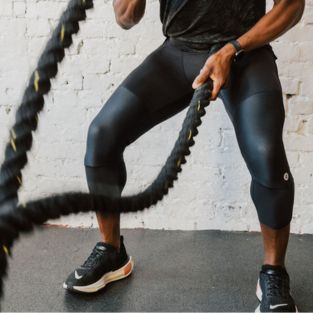
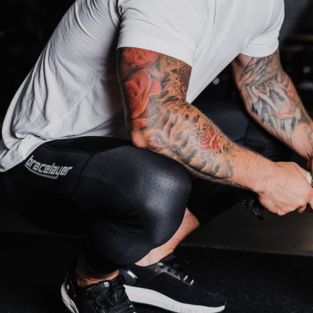

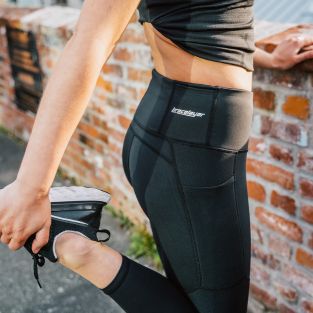
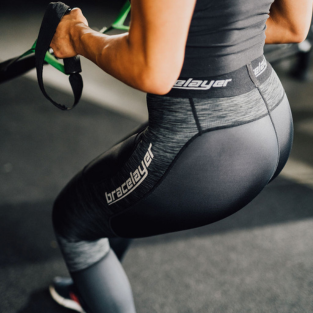

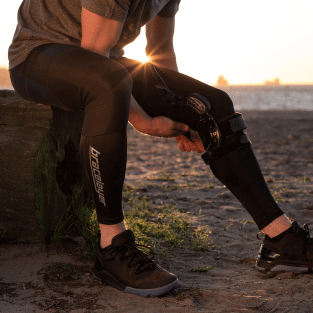
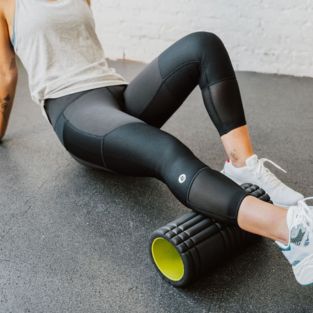
Leave a comment